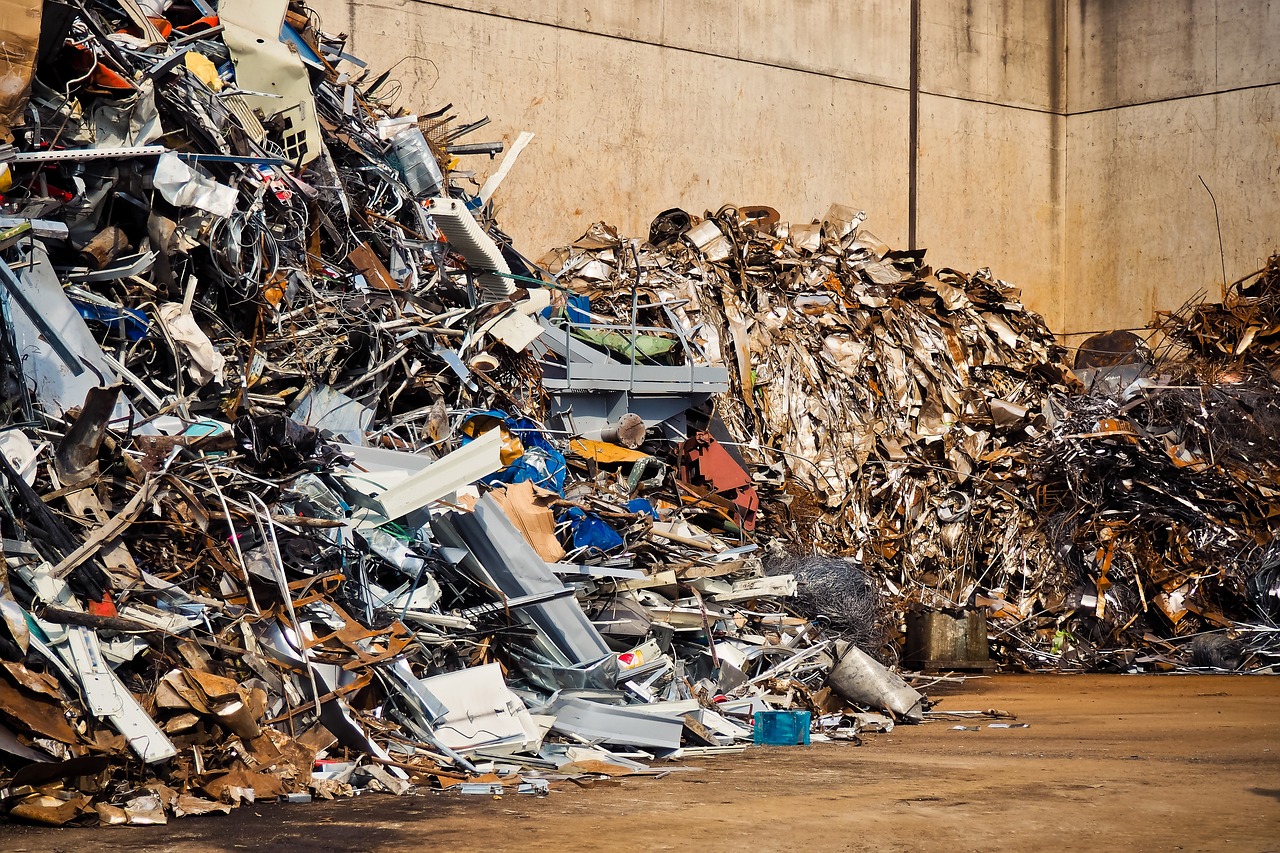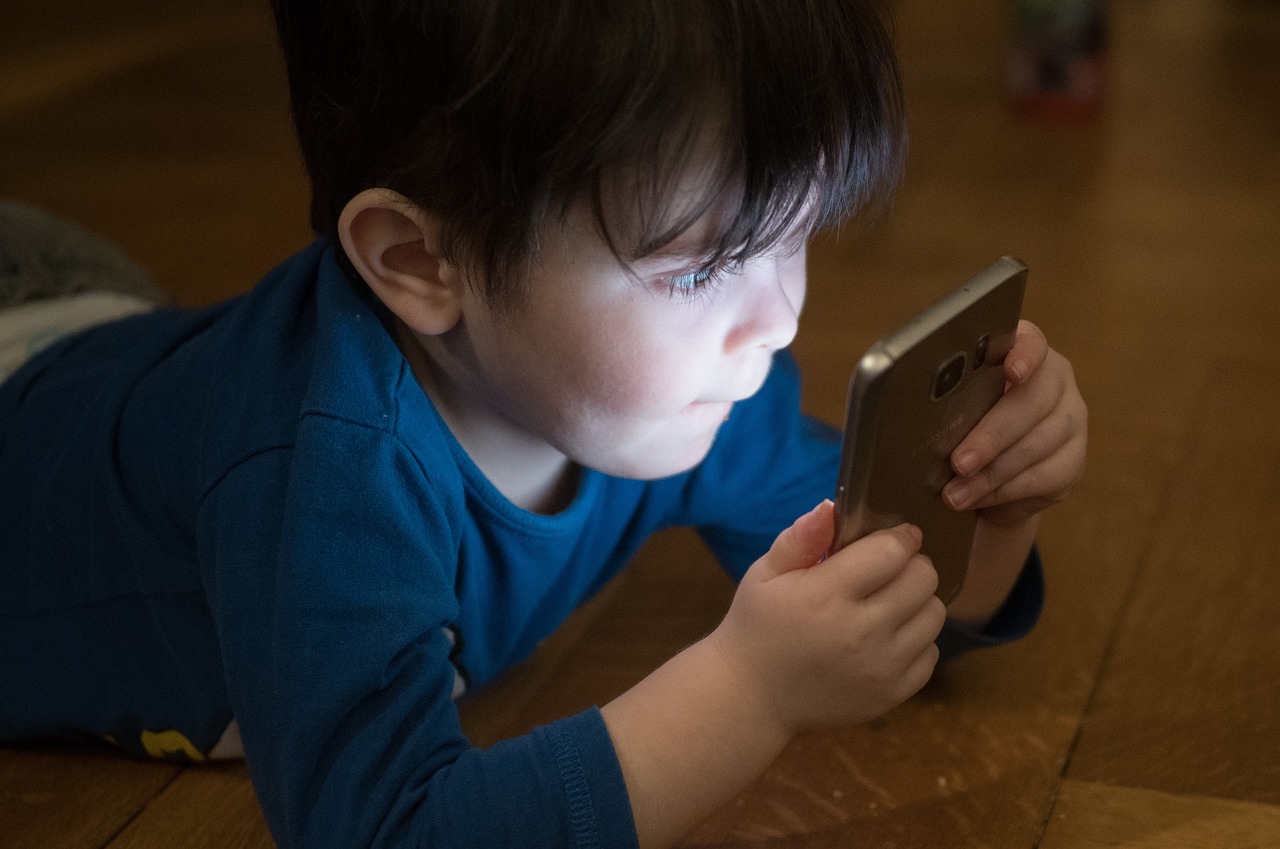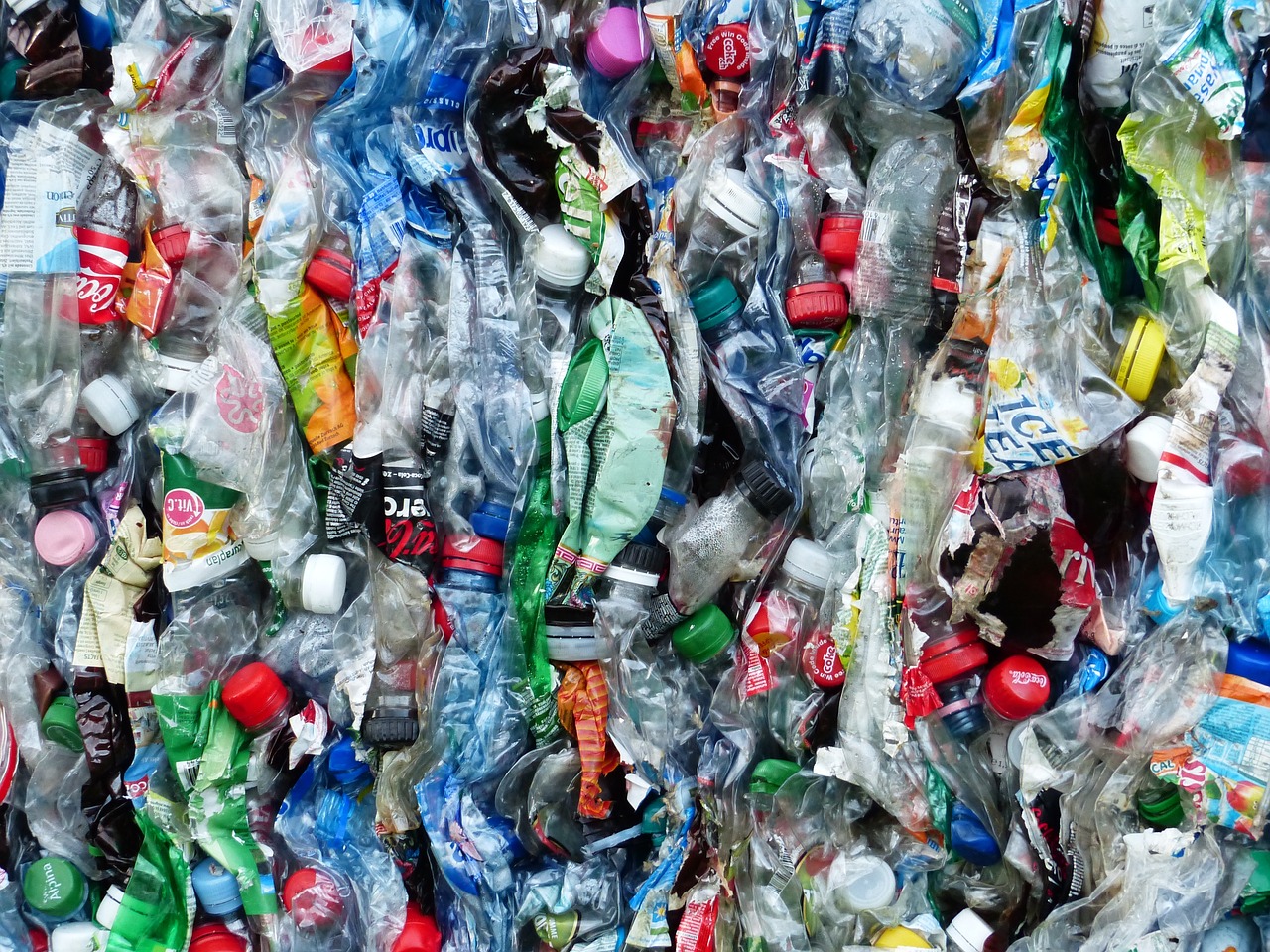The Role of Education in Recycling Initiatives
Education plays a pivotal role in shaping how we perceive and engage with recycling initiatives. It's not just about tossing a plastic bottle into the right bin; it's about understanding the broader impact of our actions on the environment. By fostering a culture of environmental awareness and promoting sustainable practices, education empowers individuals and communities alike to make informed decisions. Imagine a world where every person, young and old, knows the ins and outs of recycling—what can be recycled, how to prepare items for recycling, and the benefits of doing so. This vision is achievable through comprehensive educational programs that highlight the importance of recycling and its role in conserving our planet's precious resources.
Moreover, education can spark a sense of responsibility and stewardship towards our environment. When people understand the environmental impact of waste and the significance of recycling, they are more likely to participate actively in recycling initiatives. This awareness can lead to a ripple effect, where informed individuals share their knowledge with family and friends, creating a community that values sustainability. In this article, we will delve into how educational strategies and programs can enhance recycling efforts, ultimately contributing to a greener future.
A foundational understanding of recycling is crucial for effective participation. Recycling isn't just a buzzword; it's a process that involves several steps to turn waste materials into new products. To fully grasp the importance of recycling, it’s essential to know what materials can be recycled and the processes involved. Commonly recycled materials include:
- Paper: Newspapers, magazines, and cardboard.
- Plastics: Most containers marked with recycling symbols.
- Metals: Aluminum cans and steel products.
- Glass: Bottles and jars.
Understanding these materials helps individuals make better choices about what to recycle, thus reducing landfill waste. The recycling process typically involves collecting, sorting, cleaning, and processing materials, which are then transformed into new products. By educating the public about these basics, we can enhance their participation in recycling initiatives.
Schools play a pivotal role in shaping recycling habits from a young age. By integrating recycling education into the curriculum, educators can instill a sense of environmental responsibility in students. Various programs have been designed to teach students about recycling and its environmental benefits. For example, programs that include interactive lessons, field trips to recycling facilities, and guest speakers from environmental organizations can significantly enhance students' understanding of recycling.
Engaging students through hands-on activities enhances their understanding of recycling. Practical projects, such as creating art from recycled materials or organizing a school-wide recycling competition, can make learning about recycling fun and impactful. These activities not only educate students about the importance of recycling but also encourage teamwork and creativity. Schools can implement projects like:
- Recycling Art Projects: Using recyclable materials to create art installations.
- School Gardens: Composting food waste to enrich soil.
- Recycling Drives: Collecting items to donate to recycling centers.
Community involvement is essential for successful educational initiatives. Local organizations can collaborate with schools to promote recycling education through community events. For instance, hosting community clean-up days or recycling fairs can engage families and reinforce the lessons learned in school. These events not only educate participants about recycling but also foster a sense of community spirit.
Integrating recycling topics into the curriculum fosters a comprehensive understanding. Educators can weave recycling education into subjects such as science, social studies, and art. For example, in science classes, students can learn about the environmental impact of waste, while in social studies, they can explore the history of recycling and its significance in different cultures. This interdisciplinary approach ensures that recycling education is not seen as an isolated topic but as an integral part of a well-rounded education.
Raising awareness about recycling is key to increasing participation. Effective strategies to promote recycling awareness within communities include workshops, informational booths at local events, and social media campaigns. By providing accessible information and resources, individuals are more likely to engage with recycling initiatives and understand their importance.
Technology can enhance recycling education significantly. Digital tools and resources can engage learners and spread awareness about recycling initiatives. Online platforms can provide interactive content that makes learning about recycling more engaging and accessible.
Numerous online resources and applications can support recycling education. Websites and apps that offer information on local recycling regulations and guidelines can be incredibly helpful for individuals looking to recycle correctly. Some popular resources include:
- Earth911: A comprehensive recycling database.
- Recycle Coach: An app that provides personalized recycling information.
- iRecycle: A mobile app that helps locate recycling centers.
Social media serves as a powerful platform for spreading recycling messages. Campaigns that utilize engaging visuals and informative content can effectively educate the public on recycling practices. Hashtags like #RecycleRight and #WasteNot can help create a community of individuals committed to sustainability. By leveraging the reach of social media, we can amplify recycling initiatives and encourage greater participation.
Q1: What materials can I recycle?
A1: Commonly recycled materials include paper, plastics, metals, and glass. Always check local guidelines for specific recycling rules.
Q2: How can schools implement recycling programs?
A2: Schools can create educational programs, engage students in hands-on projects, and collaborate with local organizations to promote recycling.
Q3: What role does technology play in recycling education?
A3: Technology enhances recycling education through online resources, apps, and social media campaigns that engage and inform the public.

Understanding Recycling Basics
Understanding the fundamentals of recycling is not just a nice-to-have; it's essential for anyone who wants to make a positive impact on the environment. When we talk about recycling, we’re referring to the process of converting waste materials into reusable materials. This not only helps to reduce the amount of waste that ends up in landfills but also conserves natural resources and reduces pollution. But what exactly can be recycled? Let’s break it down.
Recyclable materials typically fall into several categories, including:
- Plastics: Many types of plastics can be recycled, but it's crucial to check the recycling symbols on the bottom of containers. Commonly accepted plastics include PETE (1) and HDPE (2).
- Metals: Aluminum cans and steel products are widely recyclable. Think about those soda cans you toss aside; they can be turned into new products!
- Glass: Glass bottles and jars are endlessly recyclable. They can be melted down and reused without losing quality.
- Paper: Most paper products, including newspapers, cardboard, and office paper, can be recycled. However, contaminated paper, such as greasy pizza boxes, often cannot be.
Now that we know what can be recycled, let's look at the recycling process itself. The journey of recyclable materials typically follows these steps:
- Collection: Recyclables are collected from homes, businesses, and recycling centers.
- Sorting: Materials are sorted at recycling facilities to ensure that only recyclable items are processed.
- Processing: Sorted materials are cleaned and processed into raw materials that can be used to create new products.
- Manufacturing: These raw materials are then used to manufacture new items, completing the recycling loop.
It's important to note that not all materials can be recycled, and the rules can vary by location. Some communities have specific guidelines about what can and cannot be placed in recycling bins. That's why education about recycling is crucial; it empowers individuals to make informed decisions about their waste. Understanding these basics not only helps you recycle correctly but also encourages others to follow suit, creating a ripple effect of positive change.
In summary, grasping the basics of recycling is the first step toward becoming an active participant in your community's sustainability efforts. By knowing what materials are recyclable and understanding the recycling process, you can contribute to a healthier planet. So, the next time you reach for that plastic bottle, remember: every small action counts!

Educational Programs in Schools
Schools are not just places for academic learning; they are pivotal environments where lifelong habits are formed, including those related to recycling. By implementing educational programs focused on recycling, schools can significantly influence students' attitudes toward waste management and environmental stewardship. These programs go beyond the basics of recycling; they instill a sense of responsibility and community awareness in students, making them active participants in the sustainability movement.
One of the most effective ways to teach students about recycling is through hands-on learning activities. Imagine a classroom where students don’t just learn about recycling from a textbook but actually engage in real-world projects. For instance, schools can organize a recycling drive where students collect recyclable materials from their homes and community. This not only teaches them what can be recycled but also allows them to see the tangible impact of their efforts.
Moreover, integrating recycling education into the school curriculum can enhance students' understanding of its importance. Teachers can incorporate recycling topics into subjects such as science, art, and even mathematics. For example, a science lesson could focus on the lifecycle of materials, while an art project might involve creating sculptures from recycled items. This cross-curricular approach ensures that students grasp the multifaceted nature of recycling and its relevance in various aspects of life.
Community involvement is another critical aspect of successful educational initiatives. Schools can collaborate with local organizations to promote recycling education through community events. For instance, a local recycling company might partner with schools to host workshops, where students learn about the recycling process and its environmental benefits. These partnerships can also lead to field trips to recycling facilities, giving students firsthand experience of how their efforts contribute to a larger system.
In addition to these collaborative efforts, schools can create a culture of recycling by implementing programs that reward students for their participation. For example, schools could establish a point system where classes earn points for the amount of recyclable materials they collect. These points could then be redeemed for prizes or special privileges, fostering a competitive yet fun atmosphere around recycling.
As we explore the various educational programs in schools, it becomes clear that their impact extends beyond the classroom. By instilling a sense of environmental responsibility in students, schools are not just teaching them about recycling; they are shaping future generations to be conscious and proactive in their approach to sustainability.
- What age group should recycling education target? Recycling education can start as early as preschool and continue through high school, adapting the complexity of the material to the students' age.
- How can parents support recycling education at home? Parents can encourage recycling by setting up a recycling station at home and involving their children in sorting and understanding what can be recycled.
- Are there any resources for teachers to implement recycling programs? Yes, there are numerous online resources, toolkits, and local organizations that offer support and materials for teachers looking to implement recycling programs.

Hands-On Learning Activities
When it comes to teaching recycling, are the secret sauce that can transform abstract concepts into tangible experiences. Imagine a classroom buzzing with excitement as students dive into projects that not only educate them about recycling but also empower them to make a difference in their communities. These activities create a memorable learning environment, where students can see, touch, and feel the impact of their efforts.
One of the most effective hands-on activities is the Recycling Relay Race. In this engaging game, students are divided into teams and given various items that can either be recycled, composted, or thrown away. The challenge is to sort these items correctly within a time limit. Not only does this foster teamwork, but it also reinforces their understanding of what materials belong in each bin. The thrill of competition adds an element of fun, making the learning process enjoyable and memorable.
Another creative project is the Upcycling Workshop. Here, students can bring in items that would typically be discarded, such as plastic bottles, old clothes, or cardboard boxes. They can then transform these items into something new and useful, like planters, tote bags, or art pieces. This not only teaches them about the importance of reducing waste but also sparks their creativity and innovation. It's like turning trash into treasure!
To further enhance their learning, schools can organize field trips to local recycling centers. This real-world experience allows students to witness the recycling process firsthand. They can see how materials are sorted, processed, and transformed into new products. Such trips can be eye-opening, creating a deeper appreciation for the recycling system and the role they play in it.
Additionally, schools can implement a Recycling Challenge over a month-long period. Students can track the amount of recyclable materials they collect, aiming to surpass previous records. This not only encourages participation but also fosters a sense of community as they work together towards a common goal. At the end of the challenge, a small celebration can be held to recognize their efforts and achievements.
Incorporating these hands-on activities into the curriculum not only enhances students' understanding of recycling but also instills a sense of responsibility towards the environment. By engaging them in practical, fun, and educational experiences, we can cultivate a generation of environmentally conscious individuals who are eager to contribute to sustainability efforts in their communities.
- What age groups can participate in hands-on recycling activities?
Hands-on activities can be tailored for all age groups, from elementary school students to high schoolers. The complexity of the activities can be adjusted based on the students' age and understanding. - How can teachers assess the effectiveness of these activities?
Teachers can assess effectiveness through observation, student feedback, and by measuring changes in recycling behavior before and after the activities. - Can these activities be done at home?
Absolutely! Many hands-on recycling activities, like upcycling projects, can be easily done at home with family members, promoting recycling awareness beyond the classroom.

Community Involvement
Community involvement is a cornerstone of successful recycling education initiatives. When local organizations, businesses, and residents come together, they create a powerful synergy that amplifies the impact of recycling efforts. Imagine a neighborhood where everyone is not just aware of recycling practices but is actively participating in them—it’s a beautiful vision, isn’t it? This is where community involvement plays a crucial role. By collaborating with schools and local governments, community groups can host events that not only educate but also inspire action.
One effective way to foster community involvement is through recycling drives. These events can be organized in collaboration with schools, where students can bring recyclable materials from home. Not only does this teach them about the importance of recycling, but it also encourages families to engage in sustainable practices. Additionally, local businesses can contribute by sponsoring these drives, providing incentives or rewards for participants. This creates a win-win situation: businesses gain visibility while the community learns and participates in recycling.
Moreover, workshops and seminars can be organized to educate residents on how to recycle effectively. These sessions can cover topics such as:
- What materials are recyclable in the local area
- How to properly sort waste
- Innovative ways to reduce waste at home
By offering practical knowledge, these workshops empower community members to take actionable steps toward sustainability. Furthermore, local organizations can partner with environmental experts to provide hands-on training, making the learning experience more engaging and effective.
Another significant aspect of community involvement is the role of social media. Local groups can leverage platforms like Facebook, Instagram, and Twitter to spread the word about recycling events and initiatives. Creating a dedicated page for recycling efforts can help in sharing success stories, tips, and upcoming events, thus keeping the community informed and motivated. Visual content, such as videos and infographics, can be particularly effective in capturing attention and conveying important information quickly.
In summary, community involvement is essential for enhancing recycling education. By fostering collaboration between schools, local organizations, and residents, we can create a culture of sustainability that benefits everyone. The more we engage with our community, the more we can inspire each other to make a positive impact on our environment. After all, recycling is not just an individual effort; it’s a collective journey toward a cleaner, greener future.
Q: How can I get involved in local recycling initiatives?
A: You can start by checking with your local community center or school to see if they have any upcoming recycling events. Additionally, consider joining local environmental groups that focus on sustainability.
Q: What are some effective ways to promote recycling in my community?
A: Organizing workshops, creating social media campaigns, and hosting recycling drives are all effective methods. Engaging local businesses for sponsorship can also boost participation.
Q: How can schools contribute to community recycling efforts?
A: Schools can implement recycling programs, involve students in community events, and integrate recycling education into their curriculum, thus fostering a sense of responsibility among young learners.

Integration into Curriculum
Integrating recycling education into the curriculum is like planting seeds in a garden; with the right care and attention, these seeds can grow into a flourishing awareness of environmental responsibility among students. By weaving the principles of recycling into various subjects, educators can create a holistic learning experience that not only informs but also inspires students to take action. Imagine a science class where students learn about the lifecycle of products and the impact of waste on our planet. This approach not only enhances their understanding of recycling but also encourages critical thinking about sustainability.
One effective way to incorporate recycling into the curriculum is through project-based learning. For instance, students can engage in projects that require them to research local recycling programs, analyze their effectiveness, and propose improvements. This not only teaches them about recycling but also empowers them to become advocates for change within their communities. Additionally, subjects like mathematics can include lessons on calculating the environmental impact of waste, while art classes can involve creating sculptures from recycled materials, thus reinforcing the message of reusing and repurposing.
Moreover, integrating recycling education can be tailored to different age groups and learning styles. Younger students can learn through interactive games and storytelling, while older students might benefit from debates and presentations on environmental issues. By catering to diverse learning preferences, educators can ensure that the message of recycling resonates with every student. Furthermore, collaboration with local recycling facilities and environmental organizations can enhance the curriculum, providing students with real-world insights and hands-on experiences.
To illustrate how various subjects can incorporate recycling education, consider the following table:
| Subject | Integration Ideas |
|---|---|
| Science | Study the chemical processes involved in recycling materials. |
| Mathematics | Calculate the cost savings of recycling versus landfill disposal. |
| Art | Create art projects using recycled materials. |
| Social Studies | Explore the history and impact of recycling movements globally. |
Ultimately, the integration of recycling education into the curriculum is not just about teaching students what can be recycled; it’s about fostering a mindset of sustainability and responsibility. When students understand the importance of recycling and its impact on the environment, they are more likely to carry these values into adulthood, influencing their families and communities. This ripple effect can lead to a more environmentally conscious society, where recycling becomes a natural part of daily life. So, let’s encourage educators to embrace this vital aspect of education and nurture a generation that prioritizes the health of our planet.

Promoting Recycling Awareness
Raising awareness about recycling is not just a noble cause; it is a necessity in today’s world where waste management is becoming increasingly critical. So, how can we effectively promote recycling awareness within our communities? The answer lies in a mix of education, outreach, and engagement. First off, we need to make recycling accessible and understandable. Many people are still confused about what can and cannot be recycled. By providing clear, concise information, we can demystify the recycling process and encourage more individuals to participate.
One effective strategy is to organize community workshops that focus on the importance of recycling. These workshops can serve as a platform for sharing knowledge and resources. Imagine a community center filled with eager participants, learning about the environmental benefits of recycling while engaging in discussions about local waste management practices. These gatherings not only educate but also foster a sense of community and shared responsibility.
Another powerful tool in promoting recycling awareness is the use of visual aids. Infographics and posters can be displayed in public spaces, schools, and local businesses to catch the eye of passersby. These visuals should highlight key statistics about recycling and its impact on the environment. For instance, did you know that recycling one ton of paper can save 17 trees? Such facts can be eye-opening and compel individuals to take action.
Moreover, it’s essential to leverage the power of social media. Platforms like Facebook, Instagram, and Twitter can reach a vast audience, making them ideal for recycling campaigns. By creating engaging content—such as videos, challenges, or even memes—communities can spread the message of recycling far and wide. Social media not only informs but also encourages participation, as people love to share their experiences and successes in recycling.
To further enhance the effectiveness of these efforts, local organizations can collaborate with schools to implement recycling programs that engage students. For example, schools can host recycling competitions where students track their recycling efforts over a month. This not only instills a sense of competition but also educates young minds about the importance of sustainability. When students take pride in their recycling habits, they often influence their families and friends, creating a ripple effect throughout the community.
Finally, it’s essential to create a feedback loop. Encourage community members to share their thoughts and experiences related to recycling. This can be done through surveys or community forums. Understanding the barriers that people face when it comes to recycling can help organizations tailor their initiatives more effectively. By addressing these concerns, we can foster a more inclusive and informed community.
In conclusion, promoting recycling awareness requires a multifaceted approach that combines education, community engagement, and the strategic use of technology. By working together, we can build a culture of recycling that benefits not just our environment but also our communities as a whole. So, are you ready to take the first step towards a more sustainable future?
- What materials can I recycle? Most common recyclable materials include paper, cardboard, glass, metal, and certain plastics. Always check your local recycling guidelines for specifics.
- How can I get involved in local recycling initiatives? Look for community workshops, volunteer opportunities, or local organizations focused on sustainability.
- What are the benefits of recycling? Recycling reduces waste in landfills, conserves natural resources, and lowers greenhouse gas emissions. It’s a win-win for the environment!

Role of Technology in Education
In today's fast-paced world, technology has become a cornerstone of education, transforming how we teach and learn about crucial topics like recycling. The integration of technology into educational frameworks not only makes learning more engaging but also expands access to vital information. Imagine a classroom where students can explore the intricacies of recycling through interactive simulations, virtual field trips, or even gamified lessons. This is the power of technology in education, and it plays a significant role in shaping our understanding of recycling initiatives.
One of the most exciting aspects of using technology in recycling education is the availability of digital tools and resources. These tools can help educators present complex recycling concepts in a way that is both accessible and engaging. For example, online platforms can provide students with interactive quizzes that reinforce their knowledge about what can and cannot be recycled. Additionally, educational videos and documentaries can illustrate the recycling process, making it easier for students to grasp the importance of their participation in these initiatives.
Moreover, technology enables real-time data collection and analysis, allowing students to see the immediate impact of their recycling efforts. For instance, schools can implement digital tracking systems that monitor how much waste is being diverted from landfills. This not only fosters a sense of accountability among students but also encourages them to think critically about their consumption habits. When students can visualize their contributions to recycling efforts, they are more likely to feel empowered and motivated to participate actively.
Furthermore, the role of technology extends beyond the classroom. With the rise of online resources and mobile applications, students and community members can access valuable information about recycling anytime, anywhere. For example, apps that provide guidelines on how to recycle specific materials can help individuals make informed decisions at home. By simply scanning a barcode or searching for a product, users can learn whether it is recyclable and how to dispose of it properly. This level of convenience can significantly enhance recycling participation rates.
Social media platforms also serve as powerful tools for spreading awareness and educating the public about recycling practices. Schools and community organizations can harness the reach of social media to launch campaigns that highlight the importance of recycling. By creating engaging content, such as infographics, videos, and challenges, they can inspire others to join the cause. Imagine a community-wide challenge where participants share their recycling efforts on social media, sparking a friendly competition that raises awareness and boosts engagement.
In conclusion, the role of technology in education, particularly concerning recycling initiatives, is undeniable. By utilizing digital tools, online resources, and social media, we can create a more informed and engaged society. As we continue to embrace technological advancements, we must ensure that they are used effectively to promote sustainable practices and foster a culture of environmental responsibility.
- How can technology enhance recycling education in schools?
Technology can provide interactive learning experiences, making complex topics like recycling more engaging and accessible for students. - What types of digital tools are available for recycling education?
There are numerous online platforms, apps, and educational videos that can help teach students about recycling processes and the importance of sustainability. - How can social media be used to promote recycling awareness?
Social media campaigns can engage the public by sharing informative content, launching challenges, and showcasing community efforts in recycling.

Online Resources and Apps
In today's digital age, online resources and mobile applications have become invaluable tools for enhancing recycling education. These platforms not only provide essential information but also engage users in interactive ways, making learning about recycling both fun and effective. Imagine having a recycling assistant right in your pocket! With just a few taps on your smartphone, you can access a wealth of knowledge and resources that can help you become more environmentally conscious.
One of the most effective ways to educate people about recycling is through user-friendly apps that offer tailored information based on location. For example, apps like Recycle Coach and iRecycle allow users to input their zip codes and receive detailed guidelines on what can be recycled in their area. This localized approach not only helps individuals understand their recycling options but also encourages them to participate actively. When people know exactly what to do, they are more likely to take action!
Moreover, many of these applications include features such as reminders for collection days, tips for reducing waste, and even gamified elements that challenge users to improve their recycling habits. For instance, users might earn points for recycling correctly, which can be exchanged for rewards or discounts at local businesses. This not only fosters a sense of community but also makes recycling a rewarding experience.
In addition to apps, numerous websites serve as comprehensive resources for recycling education. Websites like Earth911 and Recycling Partnership provide extensive databases of recycling guidelines, educational materials, and even community events focused on sustainability. These platforms often feature articles, videos, and infographics that make complex information more digestible. It's like having a recycling encyclopedia at your fingertips!
To further illustrate the impact of these resources, consider the following table that highlights some popular recycling apps and their features:
| App Name | Features | Platform |
|---|---|---|
| Recycle Coach | Personalized recycling info, collection reminders, tips | iOS, Android |
| iRecycle | Local recycling options, search for materials, tips | iOS, Android |
| Waste Wizard | Search for disposal options, recycling guidelines | Web, iOS, Android |
As we can see, these tools not only educate but also empower individuals to make informed decisions about their waste. By leveraging technology, we can create a more engaged and environmentally responsible community. So, if you haven't explored these resources yet, what are you waiting for? Dive into the world of recycling apps and online tools, and take your first step toward a greener future!

Social Media Campaigns
In today's digital age, social media has become a powerful tool for spreading awareness and driving change, especially when it comes to recycling initiatives. With billions of users scrolling through their feeds daily, platforms like Facebook, Instagram, Twitter, and TikTok present an incredible opportunity to engage and educate the public about recycling practices. Imagine a world where a simple hashtag can ignite a movement or a viral video can inspire communities to take action! That's the magic of social media.
Social media campaigns can take many forms, from eye-catching graphics and informative videos to interactive posts that encourage followers to share their recycling efforts. For instance, a campaign could challenge users to post photos of their recycling bins, showcasing what they recycle and how they do it. This not only raises awareness but also builds a sense of community among participants. When people see their friends and neighbors engaging in recycling, they are more likely to follow suit, creating a ripple effect of positive behavior.
Moreover, effective social media campaigns often utilize a mix of engaging content types. Here are some strategies that have proven successful:
- Educational Infographics: Visual representations of recycling statistics and tips can grab attention and make complex information easily digestible.
- Live Q&A Sessions: Hosting live sessions with recycling experts can provide real-time answers to community questions, fostering a deeper understanding.
- Challenge Campaigns: Initiatives like “30 Days of Recycling” encourage users to commit to recycling every day for a month, sharing their progress online.
Additionally, social media allows for targeted advertising, meaning campaigns can reach specific demographics that may be more receptive to recycling education. By analyzing user data, organizations can tailor their messages to resonate with different age groups, interests, and locations. This ensures that the right message reaches the right people at the right time, amplifying the impact of recycling initiatives.
To further enhance the effectiveness of these campaigns, it's essential to collaborate with influencers who are passionate about sustainability. These individuals can leverage their platforms to reach a wider audience and lend credibility to the recycling message. When followers see someone they admire advocating for recycling, it can motivate them to adopt similar practices in their own lives.
In conclusion, social media campaigns are an invaluable asset in the fight for better recycling practices. By harnessing the power of digital platforms, we can create a more informed and engaged public, ultimately leading to significant improvements in recycling rates. The potential for creativity and community building in these campaigns is limitless, and as we continue to innovate, we can inspire a generation to prioritize sustainability in their everyday lives.
Q: How can I start a recycling campaign on social media?
A: Begin by defining your goals, choosing the right platform, and creating engaging content that resonates with your audience. Consider collaborating with local organizations or influencers to amplify your message.
Q: What type of content works best for recycling campaigns?
A: Visual content, such as infographics and videos, tends to perform well. Additionally, interactive content like polls and challenges can encourage participation and sharing.
Q: How can I measure the success of my social media campaign?
A: Track engagement metrics such as likes, shares, comments, and overall reach. Additionally, consider using specific hashtags to monitor conversations around your campaign.
Frequently Asked Questions
- What are the basic materials that can be recycled?
Recycling can include a wide range of materials! Commonly recycled items include paper, cardboard, glass, metals, and certain plastics. It's essential to check local guidelines, as not all materials are accepted everywhere. Think of it as a treasure hunt for resources that can be reused instead of tossed into the landfill!
- How can schools effectively teach recycling?
Schools can implement various educational programs that focus on recycling. Hands-on learning activities, like creating art from recycled materials or participating in school-wide recycling competitions, can make the learning process fun and engaging. By integrating recycling topics into subjects like science and art, students can see the relevance of recycling in their everyday lives.
- What role does community involvement play in recycling education?
Community involvement is vital for the success of recycling initiatives! Local organizations can partner with schools to host events, workshops, and clean-up days that promote recycling. When communities come together, they create a supportive environment that encourages everyone to participate in sustainable practices. It’s like building a network of eco-warriors!
- How can technology enhance recycling education?
Technology opens up a world of possibilities for recycling education. Digital tools, such as interactive apps and online resources, can engage students and provide them with valuable information about recycling practices. Additionally, social media campaigns can spread awareness and encourage community participation, making recycling a trending topic!
- Are there specific apps that can help with recycling education?
Absolutely! There are numerous apps designed to help users understand recycling better. Some popular ones include 'iRecycle' and 'Recycle Coach', which provide information on what can be recycled and where to find local recycling facilities. These tools make it easier for everyone to become recycling champions in their communities!
- How can social media be used to promote recycling awareness?
Social media is a powerful tool for spreading recycling messages. Creative campaigns, engaging visuals, and informative posts can capture people's attention and motivate them to take action. By sharing tips, success stories, and challenges, communities can create a buzz around recycling that encourages participation and fosters a culture of sustainability.



















